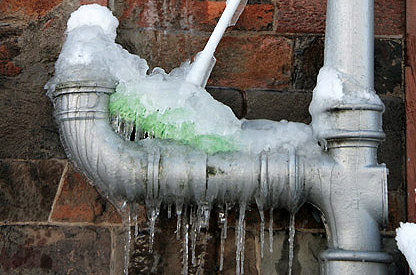Important Tips to Prevent Frozen Pipes in Cold Weather
Important Tips to Prevent Frozen Pipes in Cold Weather
Blog Article
How do you really feel on the subject of How To Avoid Freezing Pipes?

Cold weather can wreak havoc on your plumbing, particularly by freezing pipelines. Right here's just how to stop it from taking place and what to do if it does.
Intro
As temperatures drop, the threat of frozen pipes increases, possibly causing pricey repairs and water damage. Comprehending just how to stop frozen pipelines is important for house owners in cold environments.
Comprehending Icy Pipes
What triggers pipes to ice up?
Pipelines ice up when subjected to temperature levels below 32 ° F (0 ° C) for extended periods. As water inside the pipelines ices up, it increases, taxing the pipe walls and possibly causing them to break.
Threats and problems
Frozen pipelines can result in water system disruptions, home damage, and expensive repair services. Burst pipes can flood homes and create comprehensive structural damage.
Signs of Frozen Water Lines
Determining frozen pipes early can avoid them from breaking.
Exactly how to determine icy pipes
Look for reduced water circulation from faucets, unusual smells or noises from pipelines, and noticeable frost on exposed pipelines.
Avoidance Tips
Protecting at risk pipes
Wrap pipelines in insulation sleeves or utilize warm tape to safeguard them from freezing temperature levels. Focus on pipes in unheated or outside locations of the home.
Heating techniques
Maintain indoor areas sufficiently heated up, especially areas with plumbing. Open cabinet doors to permit warm air to circulate around pipelines under sinks.
Shielding Outdoor Plumbing
Yard hoses and outside taps
Disconnect and drain garden tubes prior to winter months. Mount frost-proof spigots or cover outside taps with protected caps.
What to Do If Your Pipelines Freeze
Immediate activities to take
If you think frozen pipes, keep taps open to ease pressure as the ice melts. Utilize a hairdryer or towels soaked in hot water to thaw pipelines slowly.
Long-Term Solutions
Structural adjustments
Consider rerouting pipes far from outside walls or unheated locations. Include added insulation to attics, cellars, and crawl spaces.
Upgrading insulation
Buy top quality insulation for pipelines, attics, and wall surfaces. Appropriate insulation helps keep consistent temperatures and minimizes the risk of frozen pipes.
Final thought
Protecting against frozen pipelines calls for positive actions and quick reactions. By comprehending the reasons, signs, and preventive measures, property owners can protect their plumbing throughout winter.
5 Ways to Prevent Frozen Pipes
Drain Outdoor Faucets and Disconnect Hoses
First, close the shut-off valve that controls the flow of water in the pipe to your outdoor faucet. Then, head outside to disconnect and drain your hose and open the outdoor faucet to allow the water to completely drain out of the line. Turn off the faucet when done. Finally, head back to the shut-off valve and drain the remaining water inside the pipe into a bucket or container. Additionally, if you have a home irrigation system, you should consider hiring an expert to clear the system of water each year.
Insulate Pipes
One of the best and most cost-effective methods for preventing frozen water pipes is to wrap your pipes with insulation. This is especially important for areas in your home that aren’t exposed to heat, such as an attic. We suggest using foam sleeves, which can typically be found at your local hardware store.
Keep Heat Running at 65
Your pipes are located inside your walls, and the temperature there is much colder than the rest of the house. To prevent your pipes from freezing, The Insurance Information Institute suggests that you keep your home heated to at least 65 degrees, even when traveling. You may want to invest in smart devices that can keep an eye on the temperature in your home while you’re away.
Leave Water Dripping
Moving water — even a small trickle — can prevent ice from forming inside your pipes. When freezing temps are imminent, start a drip of water from all faucets that serve exposed pipes. Leaving a few faucets running will also help relieve pressure inside the pipes and help prevent a rupture if the water inside freezes.
Open Cupboard Doors
Warm your kitchen and bathroom pipes by opening cupboards and vanities. You should also leave your interior doors ajar to help warm air circulate evenly throughout your home.

I recently found that page about 6 Ways to Prevent Frozen Pipes when doing a search on the internet. Sharing is nice. You won't know, you could be doing someone a favor. I cherish your readership.
Visit Website Report this page